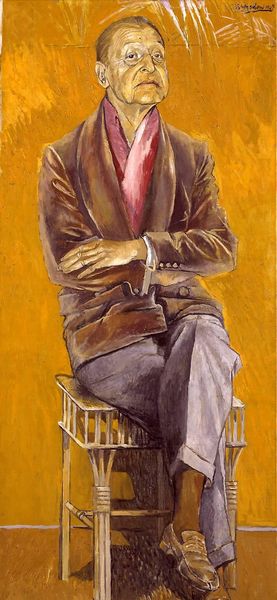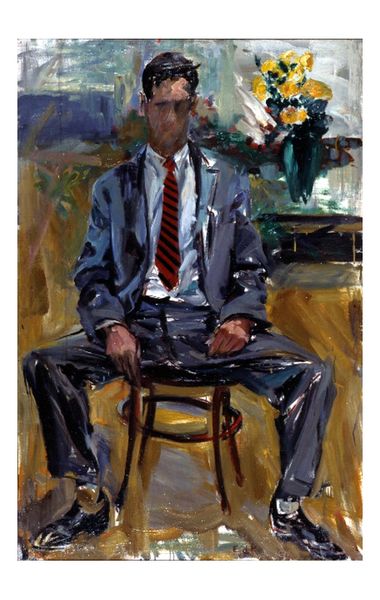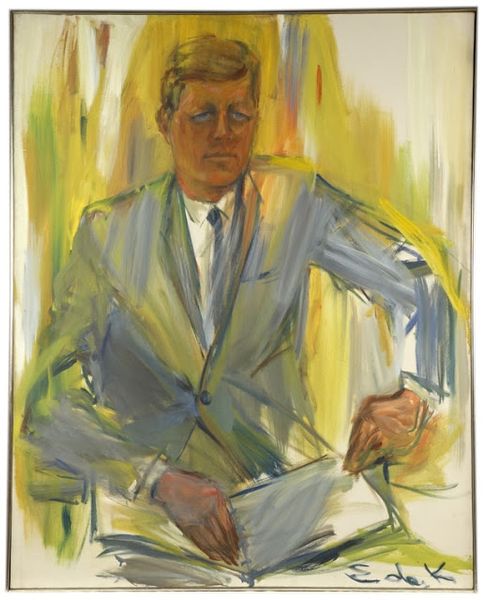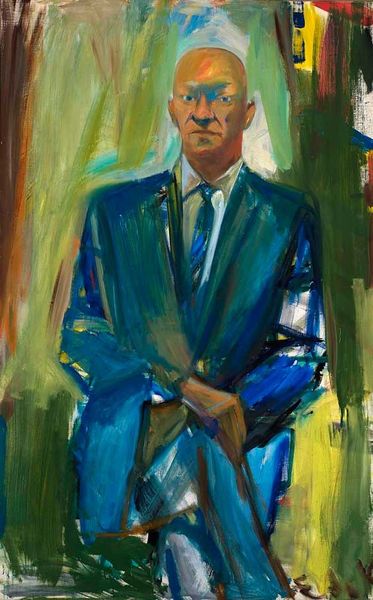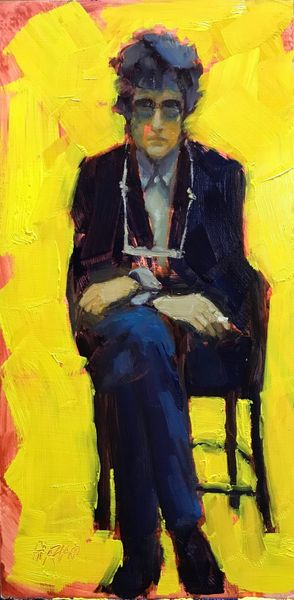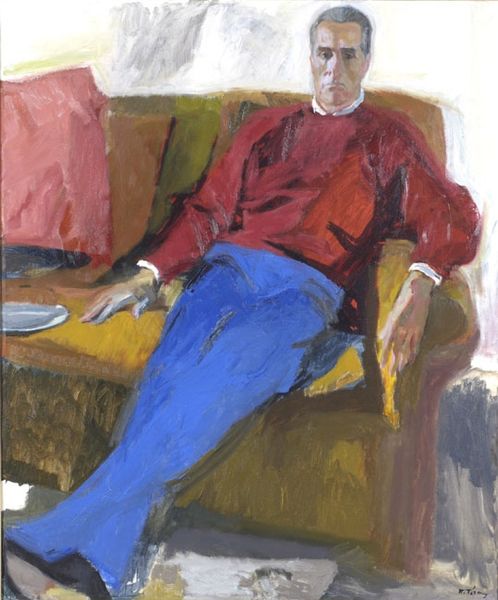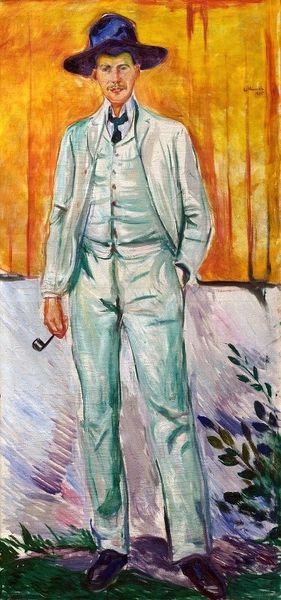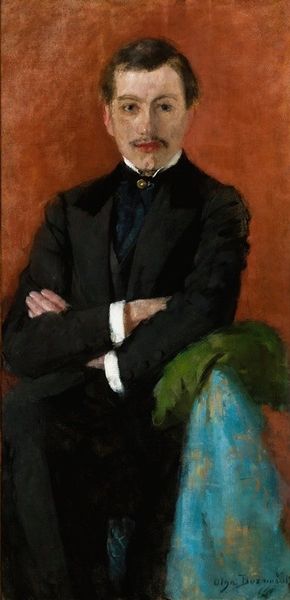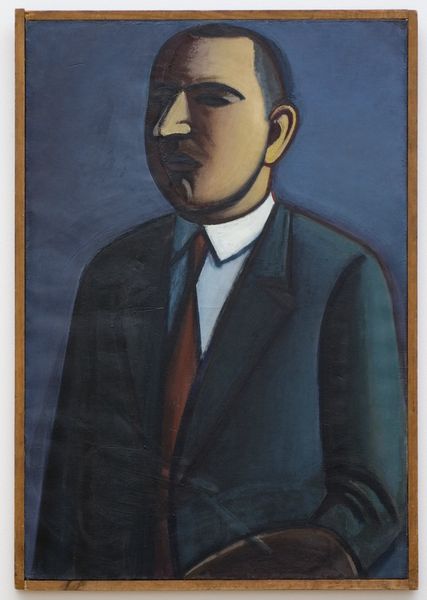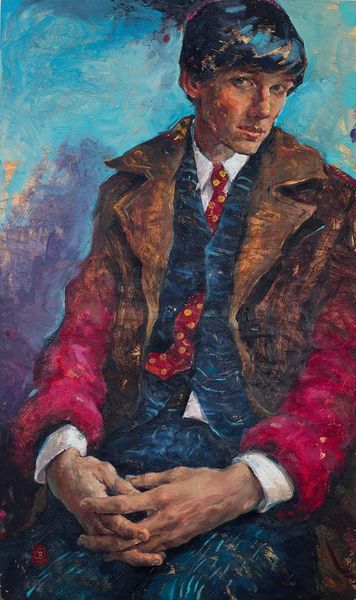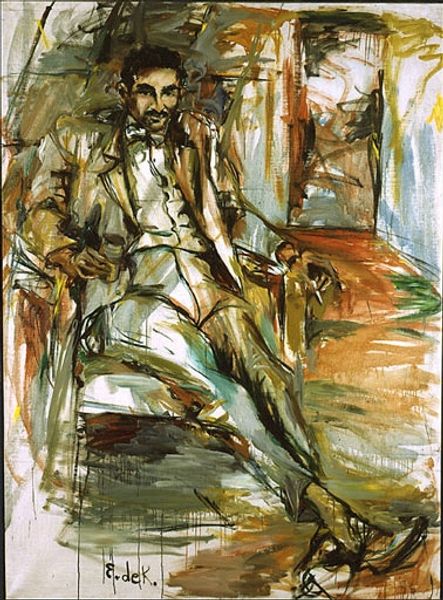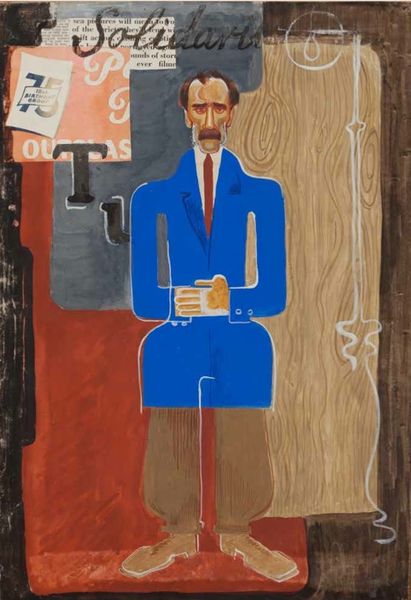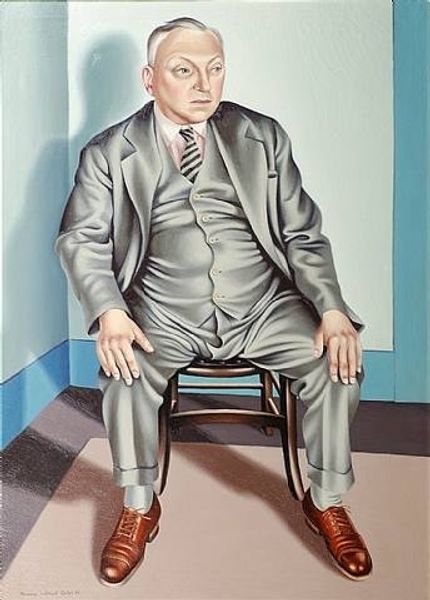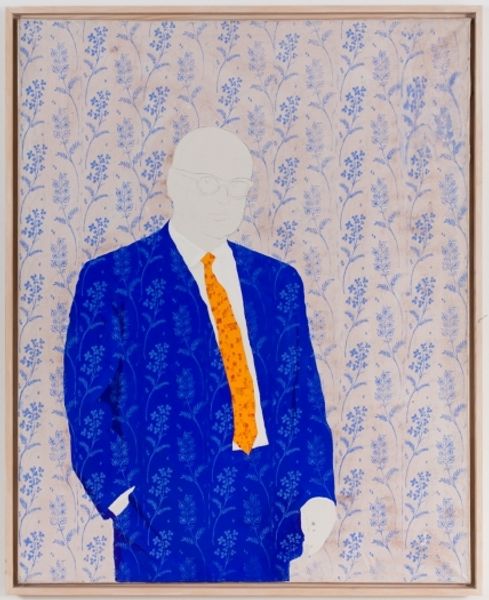
oil-paint
#
portrait
#
oil-paint
#
figuration
#
oil painting
#
modernism
Dimensions: 165.1 x 106.68 cm
Copyright: Creative Commons NonCommercial
Editor: Here we have Alice Neel's "Portrait of Timothy Collins," created in 1971 using oil paint. I'm immediately struck by the vivid color palette, particularly the juxtaposition of the cool blue suit against that striking orange background. What social or cultural narratives do you think Neel is exploring in this portrait? Curator: Neel's portraits often challenged conventional portraiture, which traditionally served as affirmations of power and status. By 1971, she was deeply engaged with counter-cultural movements. How does Timothy Collins's appearance, from his pose to his fashion, seem to reflect or resist those social currents? Editor: Well, he’s wearing a very stylish, perhaps even flamboyant suit, but his expression seems… uncertain, or maybe even a little sad? It’s an interesting contrast. Curator: Exactly. Neel captures a certain tension in her subjects. This was the era of shifting social norms, of challenging established authority. The painting makes me think about the rise of individualism within consumer culture and the anxieties related to image and identity during this time. Consider the use of that very modern plastic chair. Is she suggesting that traditional structures are being replaced by something more transient? Editor: That’s a really interesting point about the chair. I hadn't thought of it that way. The whole portrait feels less about celebrating an individual and more about placing him within this specific cultural moment. Curator: Indeed. And thinking about the art world at this time, how do you see Neel's unflinching style, her focus on psychological depth rather than idealization, fitting into the larger art market? Editor: I guess it pushes against a lot of the commercial expectations for portraiture, maybe asserting a different kind of value? Curator: Precisely. Neel reclaims portraiture as a space for social commentary, for examining the complexities of human experience outside of conventional representation. It makes us consider the public role of art in challenging societal norms and questioning power dynamics. Editor: This really makes me reconsider the relationship between the sitter and the artist and how historical context influences everything in the portrait. Curator: And that's why art history matters, not only for appreciating aesthetics but for understanding ourselves.
Comments
No comments
Be the first to comment and join the conversation on the ultimate creative platform.
